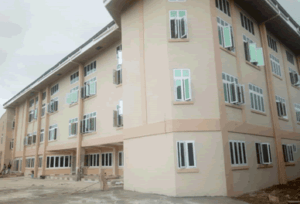Ghana Building Code launched in Upper East
 The Ghana Building Code has been launched in Navrongo, Upper East Region, by the Ghana Standards Authority to provide key specifications for building and construction works in the Region and across the country.
The Ghana Building Code has been launched in Navrongo, Upper East Region, by the Ghana Standards Authority to provide key specifications for building and construction works in the Region and across the country.
The launch was part of government’s efforts to ensure the safety of citizens.
Metropolitan, municipal and district assemblies (MMDAs), estate developers and individuals are expected to abide by the tenets of the Code.
The 1,430-page Building Code, with 38 chapters, provides specific formats to be considered, especially by the MMDAs, in manufacturing of furniture and construction of buildings and roads, aimed at ensuring safety.
Professor Alex Dodoo, the Executive Director of the GSA, who handed over the Code to the district chief executives in Navrongo, said Ghana needed value for money in the construction industry to ensure quality and safety of the citizenry.
Each assembly is expected to receive three copies to serve as guide to all types of construction works, be it residential or public.
Prof. Dodoo said Ghana, since independence, had never had a building code and that the Code, distributed free of charge, would help reduce the impact of floods, which occasionally affected the northern sector.
He said it would also ensure standards in soil sample tests and quality materials for buildings, among other things, to prevent shoddy works and the resultant collapse of buildings.
He said the MMDCEs were critical in national development, hence the distribution of the Code to serve as a reference point to aid in their monitoring of the performance of contractors.
Professor Emmanuel Abole, the District Chief Executive of Bolgatanga East, who received the Code on behalf of the Upper East Regional Minister, expressed gratitude to the Government for the effort and said it could not have come at a better time.
He said the northern sector faced challenges with some buildings during heavy rains due to the use of inferior building materials, which exposed humans and property to danger.
He expressed the hope that the Code would serve as a better guide for to ensure improvement in the construction industry and value for money.
Comparing old buildings of colonial times to the present, he decried the type and nature of building materials used in modern times, and said the colonial buildings were stronger.
Source: GNA
